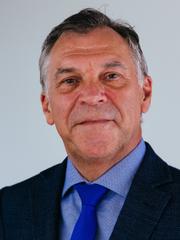Appointments
No surgery
In the case of radiosurgery, no incision is made, and you are not sedated. The word radiosurgery is used because the treatment has the same effect as surgical procedure.
Preparation
- You have to be nil-by-mouth when you come to the hospital.
- It is best to leaven jewellery and other metal object at home.
- Make sure there is something who can take you home after the radiation. You are not allowed to drive a car on the day itself.
Procedure
1. Positioning metal frame
- It is vital that you do not move your hear during the radiation.
- To achieve this, a metal frame will be placed around your head.
- The metal frame will be secured to your skull:
- Under local anaesthetic
- With 4 little screws in the skull
- No hair will be shaved off
- Keep your head still during the CT scan and the radiation
- You will feel some extra pressure when the frame is secured to your head. This pressure will go away after a few minutes.
- As soon as the frame has been secured, the CT scan will be made.
- After the CT scan you are allowed to eat and drink.
- The CT images will be processed in order to determine the radiation as accurately as possible.
2. The radiation
- The radiation will approximately take one hour.
- It's best to go to the toilet before the radiation.
- You take your position on the radiation table.
- Via the metal frame you will be secured to the table, so that your head can't move during the radiation.
- A radiation machine will turn a couple of times around your head to accurately radiate the required area.
- The radiation does not hurt.
- You will hear a buzzing noise.
- After the radiation, the metal frame will be unscrewed.
- The wounds of the screws will be disinfected and covered with plasters.


